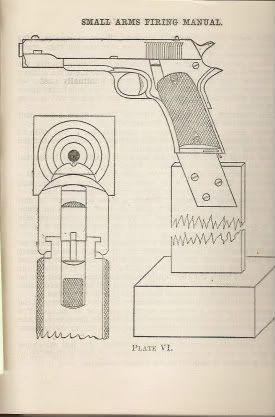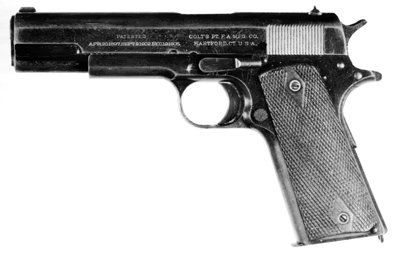Something I find strange about the idea of carrying a 1911 with the hammer down: wouldn't that have been a step backwards for the army? The 1911 was replacing a double-action revolver which could be carried ready-to-fire. So why would they accept a replacement that required an extra manual step before it could be fired?
The Army wasn't looking at it that way. And I don't believe that they really taught or expected DA shooting (outside of point blank emergency) when they went to the .38 Colt. Remember the previous Army pistols all had to be manually cocked, for each shot.
What the Army was focusing on was getting back to a .45 caliber round because the .38 they had was not doing the job well enough. And they had lots of men who were used to cocking a pistol to shoot it. With the new automatic, you only had to cock it
once, not for each shot.
its difficult to realize, today, because we have developed a long history of using (and teaching) the DA revolver in DA mode for defense, but this wasn't always the case. For a long time the general mode of thinking was that a DA revolver was to be cocked and fired single action (for accuracy) and the DA function was a point blank emergency use feature.
Generations of shooters have proven otherwise, that DA shooting can be accurate and useful but in the early years of the 20th century single action shooting was considered to be prefered. And in the Army, (as anyone who has ever served can tell you) reality and best practice is what the Army says it is. There is a reason SOP is to carry the gun hammer down, chamber
empty. IT has nothing to do with safety for the individual carrying the gun, it has to do with safety for the Army, and bystanders.
Remember that the Army takes young men, gives them a few weeks of concentrated training (only a small part of which is safe firearms handling), and then arms them. General ignorance and boyish enthusiam lead to mishaps. A regulation requiring chamber empty holster carry cuts down on this, for the good of the service. The good of the individual is not a consideration.
Taking the Army's rules as the "right" way to carry the gun is, in my opinion, foolish. The right way is whatever is safe, and serves your needs best, as an individual.
The whole "cocked and locked" phobia is a red herring. Cocked and locked in a gun where you can't see the hammer never seems to bother people.
and while I'm at it, here's another opinion...there is NO safety on a GLock. That little tab isn't a safety, it's a trigger activation switch!






